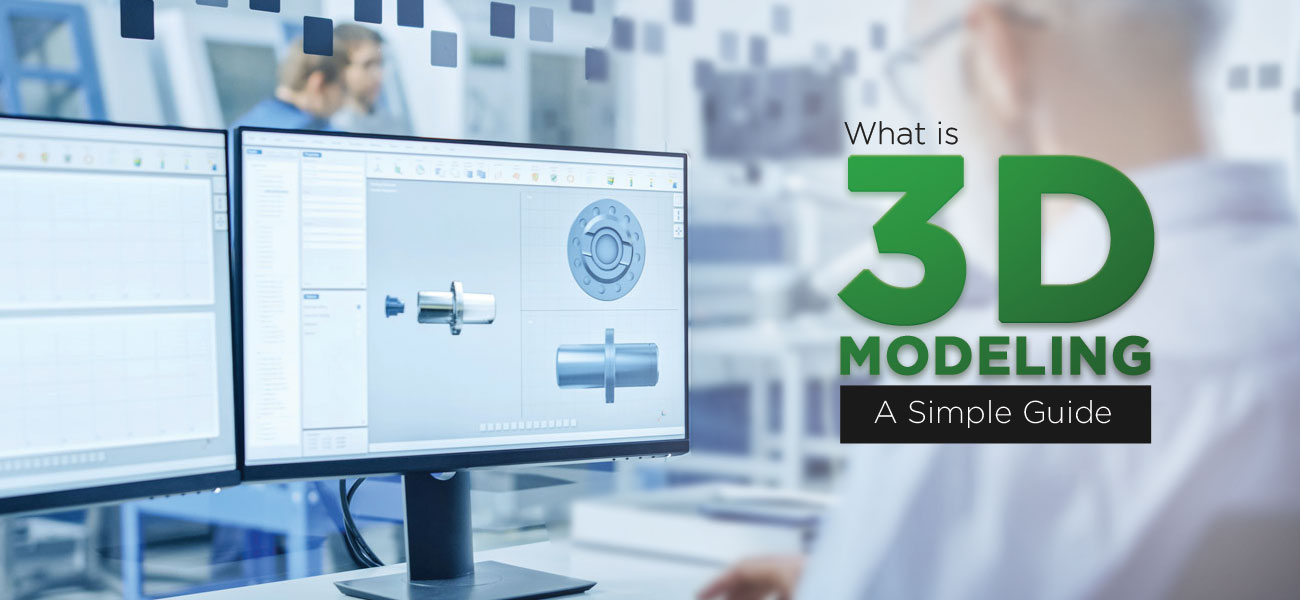What is 3D Modeling? A Brief Introduction and Uses

Do you want to learn about 3D modeling, what it is, how it is done, its applications and benefits, etc.? Or do you want to incorporate 3D modeling into your workflow and experience the vast potential it brings along? Well, whatever the case, this blog can be your go-to reference to know the basics of 3D modeling and make the most out of it.
So let's begin.
What is 3D Modeling?
3D modeling is the process of designing three-dimensional representations of any object that can determine an object's size, shape, and texture through specialized computer-based 3D modeling software.
First, a wireframe is created, then it is converted into a 3D view with the addition of surfaces. The following are the critical building blocks of 3D models:
- Vertex: A single point placed in a three-dimensional space and the smallest component of a 3D model.
- Polygon: Any straight-sided shape formed by vertices and straight edges.
- Mesh: A 3D model made up of polygons connected along their edges. A 3D model can have one or multiple 3D meshes.
- Face: This is the interior region of a polygon mesh, basically the space between the edges.
- Edge: A straight line on the surface of a 3D model, having two vertices at its endpoints where two polygon faces meet.
These are some of the basic terms to remember as we move along. Up next is the 3D environment. What you see in 3D animated movies or video games, replicates real life. Objects, creatures, characters, human figures - everything resembles real life.
But how do you think this resemblance is created? By utilizing the “3D environment” of the 3D software. Every specialized 3D modeling software uses a 3D environment that is made navigable using vectors and planes.
- Vector: These are the critical mathematical objects used in 3D modeling. Vectors primarily indicate the properties of magnitude and direction, usually along the Z, X, and Y axes.
- Plane: A two-dimensional, infinitely large, flat surface oriented along one of the 3 axes.
Related article : How Is 3D Modeling Different From 3D Sculpting?
What are the Different Types of 3D Models?
3D models can be essentially divided into three major types, solid, wireframe, and surface. The terms are based on the methods required for these types, as well as the data points they use. (Data points are necessary to make a 3D model as realistic and interactive as possible)
Related Article: 3D Modeling: An Overview of Various Techniques
How to Make Perfect 3D Models?
Although there are multiple known techniques to create a customized 3D model, the following are the five main techniques that have evolved over the course of significant improvements in 3D technology:
Related Article: Stages of 3D Model Creation From Basic to the Finished Product
What is 3D Modeling Used for?
3D modeling is used for creating digital 3D representations of objects from scratch. It is used in industries such as gaming, animation, virtual reality, architecture, and product design. This gives great flexibility to the product engineers to perform several design iterations, which would otherwise cost a fortune if done on the actual product design.
Let's explore the diverse applications of 3D modeling and understand its impact on various fields.
-
Product Design and Manufacturing
One of the primary applications of 3D modeling is in product design and manufacturing. Designers can create virtual prototypes of products, allowing them to test different designs, materials, and functionalities before investing in physical prototypes. This iterative process can significantly reduce development time and costs. Additionally, 3D models can be used to simulate manufacturing processes, identify potential bottlenecks, and optimize workflows.
-
Architecture and Construction
In the field of architecture and construction, 3D modeling is used to visualize building designs, create virtual tours, and collaborate with stakeholders. Architects can use 3D models to show clients how their designs will look in real life, helping them make informed decisions. Moreover, 3D models can be used for construction planning, identifying potential conflicts, and coordinating different trades.
-
Gaming and Animation
Gaming and animation heavily rely on 3D modeling for creating characters, environments, and special effects. Game developers use 3D models to build realistic game worlds, characters, and objects. On the other hand, animators use 3D models to develop intricate scenes and dynamic movements, enabling the production of high-quality animated films, TV shows, and online content.
-
Healthcare
Healthcare is another area where 3D modeling has made a significant impact. Surgeons can use 3D models to plan complex procedures, visualize patient anatomy, and reduce the risk of complications. Additionally, 3D models can be used to design custom prosthetics and implants, improving patient outcomes.
-
Education
Education has also benefited from 3D modeling. Educators can use 3D models to teach complex concepts in a more engaging and interactive way. Students can explore and manipulate 3D objects, gaining a deeper understanding of subjects like science, engineering, and history.
-
Automotive and Aerospace
Automotive and aerospace industries use 3D modeling for vehicle design, aerodynamics testing, and crash simulations. By creating virtual models, engineers can test different designs, optimize performance, and ensure safety.
-
Virtual Reality (VR) and Augmented Reality (AR)
3D models are the building blocks of VR and AR experiences, providing realistic and interactive environments. VR and AR can be used for training in various fields, such as gaming, healthcare, manufacturing, and more, by creating realistic simulations.
Conclusion
So there you have it—3D modeling is a game-changer in today's world. From product design, gaming, animation, architecture design, the applications of 3D modeling are vast and ever-expanding.
Whether you are designing the next big thing or visualizing your dream home, this technology makes it all possible. And if you need extra help, contact ThePro3DStudio to assist in any type of 3D modeling support.
Contact Us
Frequently Asked Questions (FAQ)
The latest trend in 3D modeling is the rise of real-time rendering. Advanced rendering algorithms allow users to create images without waiting a long time. Real-time rendering has become a game-changer in gaming and virtual reality, providing users with immersive experiences. Other trends, like Unreal or Unity and Blender, include the real-time render engine Eevee, which can produce high-quality photorealistic visuals and create immersive animations.
Designers use AI algorithms to produce 3D design models that are more accurate and realistic with faster production times. AI helps automate the design process, such as texture creation or lighting. This saves time and resources and also produces more consistent and lifelike animations.
Optimizing 3D models involves striking a balance between maintaining the quality of the model and reducing the resources needed to render it. These include polygon count, texture resolution, level of detail, lighting, and testing. Using these tips, you can optimize your 3D models by:
- Instance duplicate parts
- Generate normals to improve the final images
- Reduce face counts
- Organize the outliner
Thus, it helps to create interactive and immersive VR experiences for the users.

